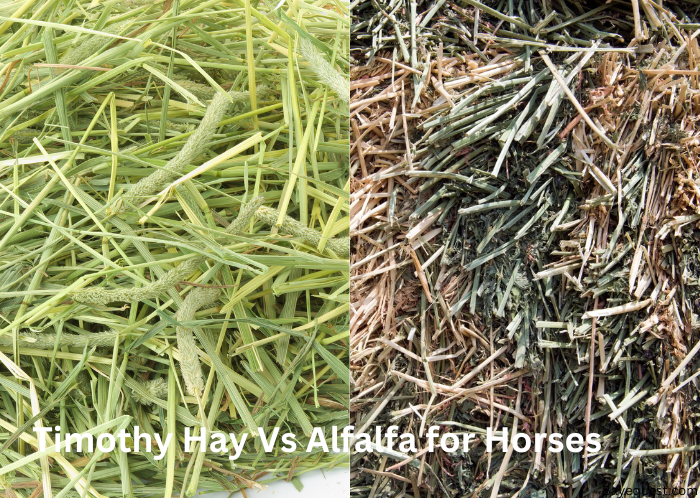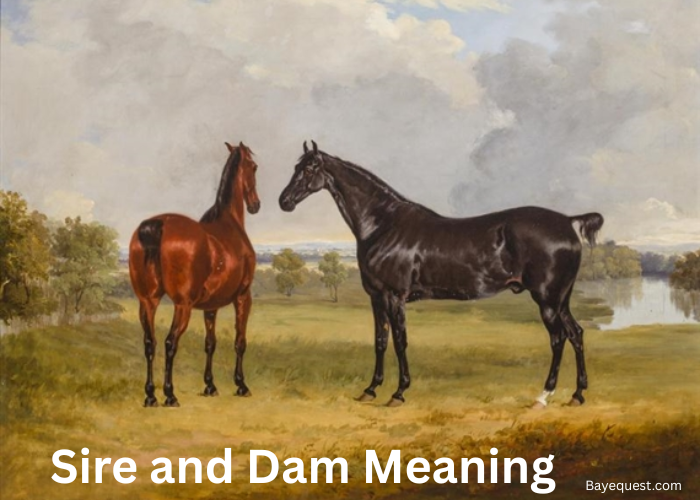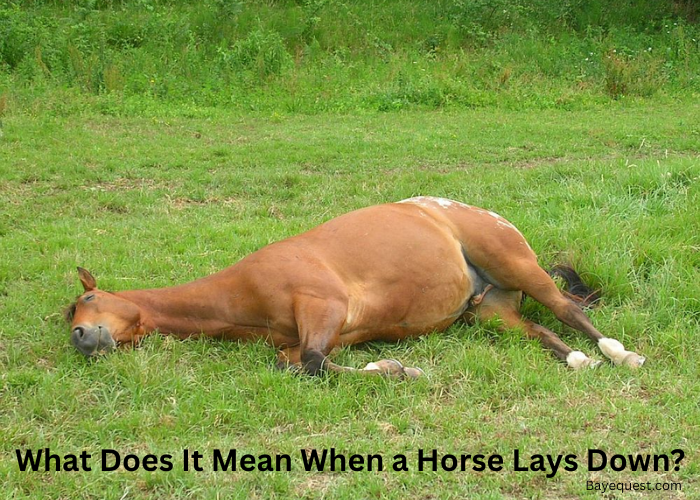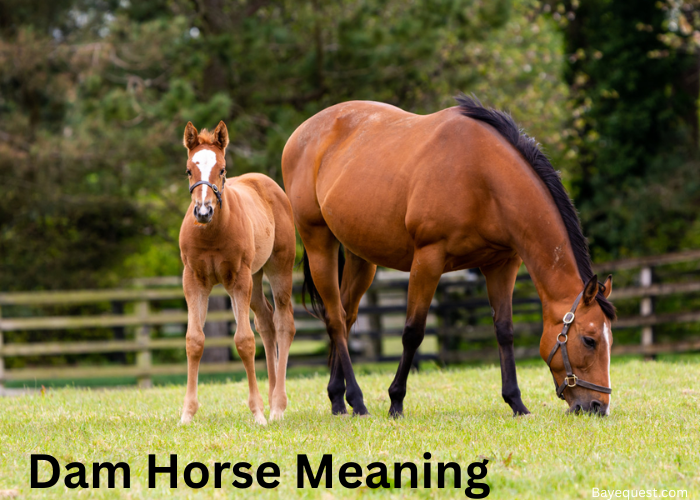Choosing the right hay for your horse can feel like picking the perfect meal for a picky eater. Timothy hay or Alfalfa?
One is like a hearty salad; the other, a protein-packed power shake. Both have their perks and their pitfalls.
But how do you know which one suits your horse best? It’s not just about taste; it’s about health, energy, and balance.
So, let’s break down Timothy hay vs alfalfa for horses. We’ll dive into the good, the bad, and everything to help you make the right choice for your equine friend.
What is Timothy Hay?
Timothy hay is a type of grass hay that comes from the Timothy grass plant, which is cut, dried, and baled. The process of making Timothy hay involves harvesting the grass at its peak nutritional stage.
After cutting, the grass is left to dry in the sun, then turned over to ensure even drying. Once dried, it is baled and stored in a dry place to maintain its quality.
Timothy hay is rich in fiber, which is essential for healthy digestion in horses. It is low in protein and calcium compared to other hays like Alfalfa.
This makes it an ideal choice for horses that are not in heavy work, overweight, or prone to certain health issues like kidney stones.
Its low calorie and moderate protein content helps maintain a horse’s weight without adding too much bulk or energy to their diet.
Pros of Timothy Hay
- High in fiber, which supports healthy digestion.
- Low in protein and calcium, making it suitable for adult horses and those with maintenance diets.
- Helps prevent obesity in horses that are not very active.
- Promotes dental health as the chewing action reduces the risk of dental problems.
Cons of Timothy Hay
- May not provide enough protein or calories for growing, pregnant, or lactating horses.
- Sometimes lacks variety in nutrients if it’s the sole source of forage.
- May be more expensive than other types of hay in certain regions.

What is Alfalfa?
Alfalfa is a legume hay that is highly nutritious and often fed to horses needing more protein and energy. It comes from the Alfalfa plant, which is harvested when it reaches an optimal growth stage.
The process involves cutting the plant, letting it dry in the sun, and then baling it. Alfalfa hay is usually more leafy and has a softer texture compared to grass hays like Timothy.
It is often green and has a sweet smell, which many horses find appetizing. Alfalfa is high in protein, calcium, and energy.
It contains more digestible nutrients than grass hay, making it a good choice for horses that need to gain weight, are growing, or are in heavy work.
The high protein content supports muscle development and repair, while the high calcium levels are beneficial for young and lactating horses.
However, these nutrients can also be too much for horses that are idle or prone to conditions like laminitis.
Pros of Alfalfa
- Rich in protein and energy, making it ideal for performance horses, young foals, and lactating mares.
- Helps underweight horses gain weight and build muscle.
- High calcium content supports strong bones in growing horses.
- Often more palatable, which encourages picky eaters to consume more hay.
Cons of Alfalfa
- Too much protein and energy can lead to weight gain in horses that are not very active.
- High calcium content may cause urinary stones in some horses.
- Not suitable as a sole feed for all horses due to its rich nutrient content; it should be balanced with other types of hay or forage.
- It can be more expensive than grass hays like Timothy, depending on where you live.
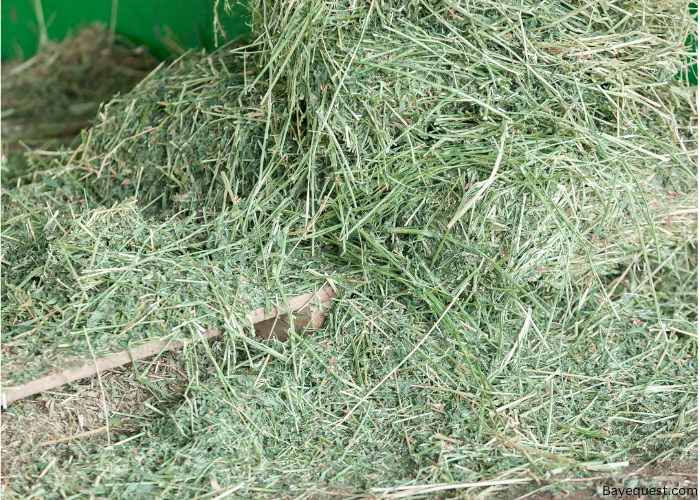
Timothy Hay Vs Alfalfa for Horses: Head-to-Head Comparison
Choosing between Timothy hay and Alfalfa hay depends on several factors. Let’s break down each aspect to help you decide.
Alfalfa Hay vs. Timothy Hay: Nutrient Levels
When it comes to nutrients, Alfalfa and Timothy hay differ significantly.
Alfalfa hay is packed with protein, calcium, and energy. This makes it ideal for horses that need extra nutrition, like young, growing foals, pregnant mares, or performance horses.
It provides the necessary fuel for muscle growth and repair. However, for horses that are prone to weight gain or have health issues like kidney stones, the high protein and calcium content can be a problem.
Timothy hay, on the other hand, is lower in protein and calcium but higher in fiber. It’s therefore great for adult horses that are on maintenance diets or those that are prone to metabolic issues.
Timothy Hay vs. Alfalfa Hay: Availability
The availability of Timothy hay and Alfalfa hay can vary depending on location and season.
Timothy hay is a cool-season grass, and it grows best in cooler climates. It’s often more available in northern regions and can be harder to find in warmer areas.
Alfalfa hay, a legume, can thrive in a wider range of climates. It is more readily available in various regions and is often harvested multiple times throughout the growing season.
This makes Alfalfa a more consistent option in many areas. However, both types can become scarce or more expensive if there are weather issues or high demand.
Alfalfa Hay vs. Timothy: The Looks
Alfalfa and Timothy hay differ not only in nutrients but also in appearance.
Alfalfa hay is usually greener and leafier with finer stems. It tends to have a soft texture and a sweet smell that horses often find appealing.
Its color can range from bright green to a darker shade, indicating freshness and nutrient content.
In contrast, Timothy hay is more yellow-green and has a coarse texture with a mix of thick stems and soft leaves. It is more fibrous and less dense than Alfalfa.
The appearance of hay can influence a horse’s willingness to eat it. Picky eaters might prefer the look and smell of Alfalfa over Timothy.
Timothy Hay vs. Alfalfa: Suitability Based on Horse
The type of hay you choose should match your horse’s specific needs.
Timothy hay is ideal for adult horses that are not in intense work. It helps maintain a healthy weight without adding unnecessary calories or proteins.
Alfalfa hay is more suitable for horses that need extra nutrients. Young horses, pregnant or lactating mares, and performance horses benefit more from it.
However, feeding Alfalfa to horses that are not very active can lead to excessive weight gain and potential health problems.
Timothy Hay vs. Alfalfa Hay for Horses: Harvesting
Harvesting methods differ between Timothy and Alfalfa hay, which affects their nutritional quality.
Timothy hay is harvested when it reaches the early bloom stage to retain its fiber content while keeping the protein levels moderate. The timing of the harvest is crucial; cutting too late can make the hay too tough and less palatable.
Alfalfa hay, in contrast, can be harvested multiple times throughout the growing season. The first cut is usually coarser, but subsequent cuts are finer and more nutrient-dense.
Proper harvesting and drying are crucial to prevent mold and retain maximum nutrients in both types of hay.
Alfalfa Hay vs. Timothy Hay for Horses: Costs
The cost of Alfalfa and Timothy hay can differ based on factors like location, season, and availability.
Usually, Alfalfa hay is more expensive than Timothy because of its high nutrient content and multiple harvests per season. It provides more protein and energy, which can make it a premium option.
This also means that it costs more in regions where it isn’t grown locally.
Timothy hay is generally less expensive but can be pricey in areas where it is less available. Seasonal changes, such as late spring or early summer harvests, can affect prices as well.
Both types of hay can be costly during periods of high demand or low supply, so budgeting for hay is crucial for horse owners.
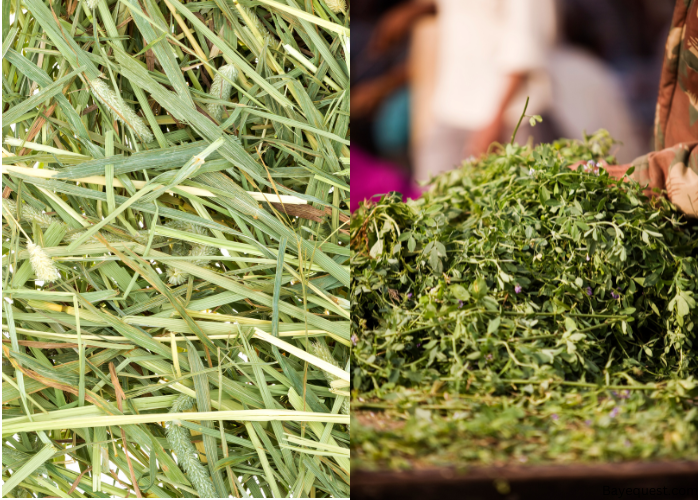
Factors to Consider When Choosing Between Timothy Hay and Alfalfa
The key factors to consider when choosing between Timothy hay and Alfalfa for your horse include:
Horse’s age and health needs. Younger, growing horses or lactating mares need more protein and calcium, making Alfalfa a better choice. Adult horses on maintenance diets do well with Timothy hay, which is lower in protein.
Activity level. Performance horses or those in heavy work benefit from the energy and protein in Alfalfa. Less active horses can maintain a healthy weight on Timothy hay.
Digestive health. Horses with metabolic issues or prone to colic may do better on high-fiber, low-calorie Timothy hay. Alfalfa’s richness can be too much for some.
Budget and availability. Alfalfa is often more expensive but offers more nutrients per bale. Timothy is usually cheaper but may cost more in areas where it’s scarce.
Mixing for balance. Sometimes, mixing both hays provides a balanced diet, combining the fiber of Timothy with the protein of Alfalfa.
Veterinarian advice. Always consult a vet or nutritionist to tailor the diet to your horse’s specific needs. Each horse is unique, and their diet should be too.
Read also: How Much Hay Can You Get Per Acre?
Which one is Better? Timothy or Alfalfa?
There isn’t a one-size-fits-all answer to whether Timothy hay or Alfalfa hay is better. It depends on the horse’s specific needs.
Timothy Hay is better for:
- Adult horses on maintenance diets who need a balanced diet without excessive calories or protein.
- Horses prone to metabolic issues like laminitis, where lower protein and calcium levels are beneficial.
- Horses that need high fiber for good digestion and to maintain a healthy weight without becoming overweight.
Alfalfa Hay is ideal for:
- Young, growing horses that need more protein and calcium for development.
- Pregnant or lactating mares that require extra nutrients to support themselves and their foals.
- Performance horses or those in heavy work that need more energy and muscle-building nutrients.
Bottom line: The “better” hay depends on the horse’s age, activity level, and health condition. Sometimes, a combination of both provides the ideal nutritional balance.
How Much Does a Hay Bale Weigh?
Hay bale weights vary by size and type.
Small square bales weigh 40–60 pounds and are easy to handle by hand. Large square bales, weighing 800–1,500 pounds, need machinery to move.
Round bales range from 500–2,000 pounds, depending on size. Whether light or heavy, there’s a hay bale suited for every job.
Timothy Hay Vs Alfalfa for Horses: Conclusion
Choosing between Timothy hay and Alfalfa isn’t about right or wrong—it’s about what’s right for your horse. Timothy is great for keeping things light and balanced.
Alfalfa packs a punch when extra energy and protein are needed. Each has its strengths, and sometimes a mix of both is the sweet spot.
Remember, every horse is unique. Their diet should be too.




